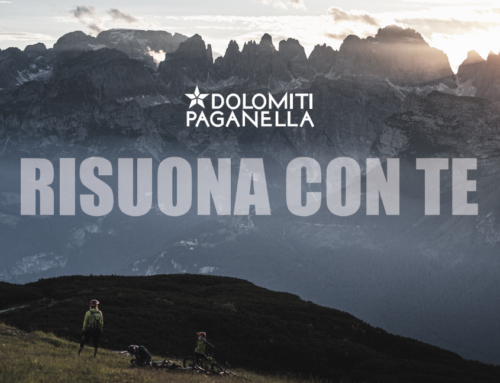In the Future Lab we have decided to talk about tourism in balance so as not to limit the discussion to environmental sustainability alone, which nevertheless remains one of the fundamental issues for reflection. Protecting our environmental heritage is an essential concern for the local area, not only for attracting tourists but above all for safeguarding our lifestyle and cultural identity.
How can tourism be sustainable? There is no single easy answer to this question. But one thing we can do is to see how other holiday destinations have interpreted this challenge with various initiatives that aspire towards a globally sustainable future.
All reasoning must be underpinned by the conviction that adopting a sustainable approach is the best choice for our future and not just a marketing strategy. Proclaiming presumed sustainable practices just to acquire a ‘green’ and ecological reputation and attract attention in the market, without real and effective policies and measures (so-called “greenwashing”), would achieve only limited results, or even worse, lose the trust of our current and future visitors while also putting the environmental resources of the area at risk.
An effective sustainability policy must first unite the entire community around a long term vision, made explicit in a series of promises and commitments. This must be followed by the effective fulfilment of the commitments made, starting from small individual measures all the way to a true evolution of the holiday resort itself. A sustainable policy can be considered genuinely effective when its results are systematically measured and assessed for any necessary adjustments, in what must be a process of continuous improvement.
We already saw in an earlier article how tourist destinations like the Faroe Islands and the Netherlands have already identified sustainability as the cornerstone of their tourist strategy. There are other similar examples from which we can draw inspiration. Let’s look at a few.
#1 CHILDREN OF PALAU, AS YOUR GUEST I PROMISE TO PRESERVE AND PROTECT YOUR ISLAND
Palau is a small island in the Pacific Ocean inhabited by 20,000 people and visited each year by about 160,000 tourists. Concerned about the impact that so many tourists can have on the coral reef, protected species, and production of waste, in 2017 the Palau Government decided to change the migration policy, making it obligatory for all visitors to take an eco-pledge at the time of entry into the country. The rubber passport stamp has been modified, now bearing the pledge (also translated into different languages) that visitors sign upon arrival in the state.
As Laura Clarke, co-founder of the project, observes, signing an official document influences tourists on a psychological level, making them more aware of the environmental impact of their holiday.

#2 SMALL TAG, BIG PROBLEM
Geotagging is an Instagram function that makes it possible to add geographic references to images shared on the social network. The function is commonly used by travel bloggers to precisely indicate the places they visit for their followers. However, in recent years this has caused an exponential growth of “hit and run” tourists at certain locations, who have the sole objective of recreating the photographs seen on their feed. This generates numerous logistical problems and negatively impacts the environment, as in the examples of Horseshoe Bend and Trolltunga. It also very negatively affects the everyday lives of residents, for example in the Austrian town of Hallstatt.
In response, certain destinations like Jackson Hole (Wyoming) and Aspen (Colorado) are requesting visitors to uphold a “geotagging pledge” in order to protect nature and encourage visitors to explore the whole territory. Photographers are invited to use a generic geotag rather than specific geotags for individual lakes or viewpoints. Applied to our tourist destination, this would mean inviting the use simply of “Dolomiti Paganella”, without specifying, for example, Cima Paganella, Rifugio La Montanara, or Sentiero Acqua e Faggi.

#3 EXPLORING THE PARK
Banff & Lake Louise is a Canadian National Park. Lake Louise is one of the most visited lakes in the world and the location receives 4 million visitors per year, more than half of these concentrated between the months of June and September. This is obviously bad for the natural ecosystem, worsened by the fact that people reach the Park by car and tend to remain in their cars while exploring the area, often all concentrating in the same small number of locations. Apart from the environment, this also negatively impacts on the experience of visitors. The DMO have therefore implemented a strategy that concentrated first on establishing a public transport system, followed by a campaign that encourages people to explore the Park on foot, or at least without a car, because immersing yourself in nature makes the experience much more memorable.

#4 THINK SUSTAINABLY
In June 2019 the city of Helsinki launched a ‘Think Sustainably’ initiative, with the aim of making the various catering operators more accessible and visible to city residents and visitors. Sustainability experts and local groups identified a series of sustainability criteria for restaurants, shops, and other reception facilities. Those who satisfied the criteria are listed on the My Helsinki website with a green tab. This enables consumers to make more informed decisions, while companies are helped to become more responsible and ecological by identifying areas in which they can improve. Read the criteria.
The criteria are subject to modification since the initiative is conceived as a continuous process, constantly reviewed and reassessed to enable ever better results. “At a certain point the new way of doing things becomes the normal way of doing things,” explains Satu Lähteenoja, expert of sustainable development at Demos Helsinki.
As we have seen there is no single way to design a sustainable future, and sustainability can be implemented in very different ways. The first step is understanding whether sustainability is an important value for our community. If we decide that it is, then we should take the opportunity of Dolomiti Future Lab to set out our own sustainability policy for the future.







